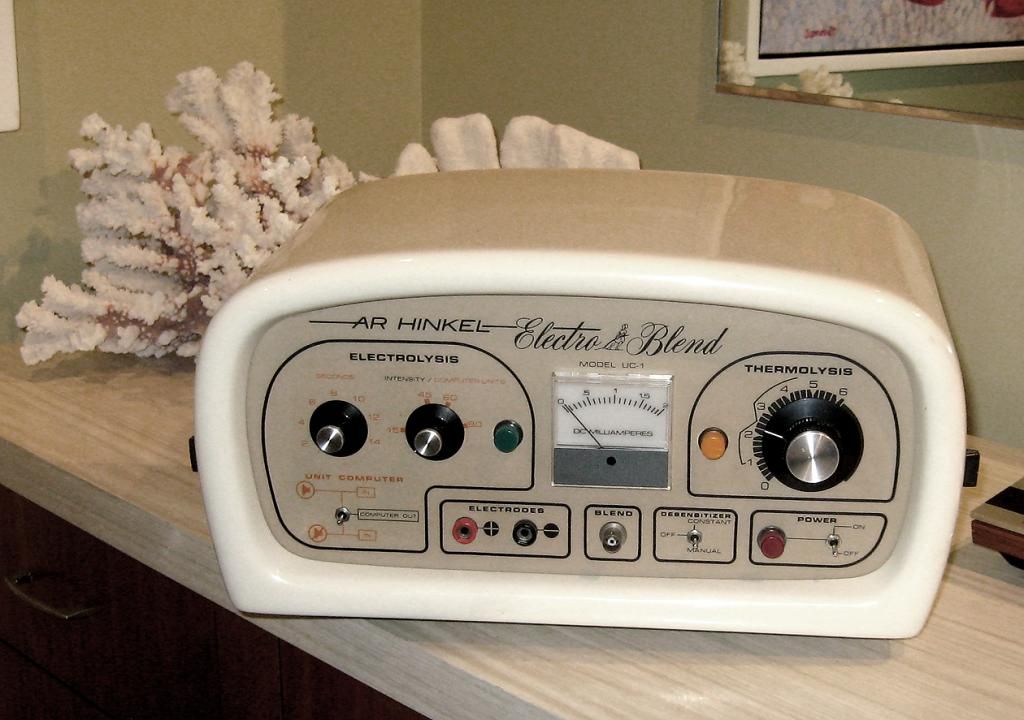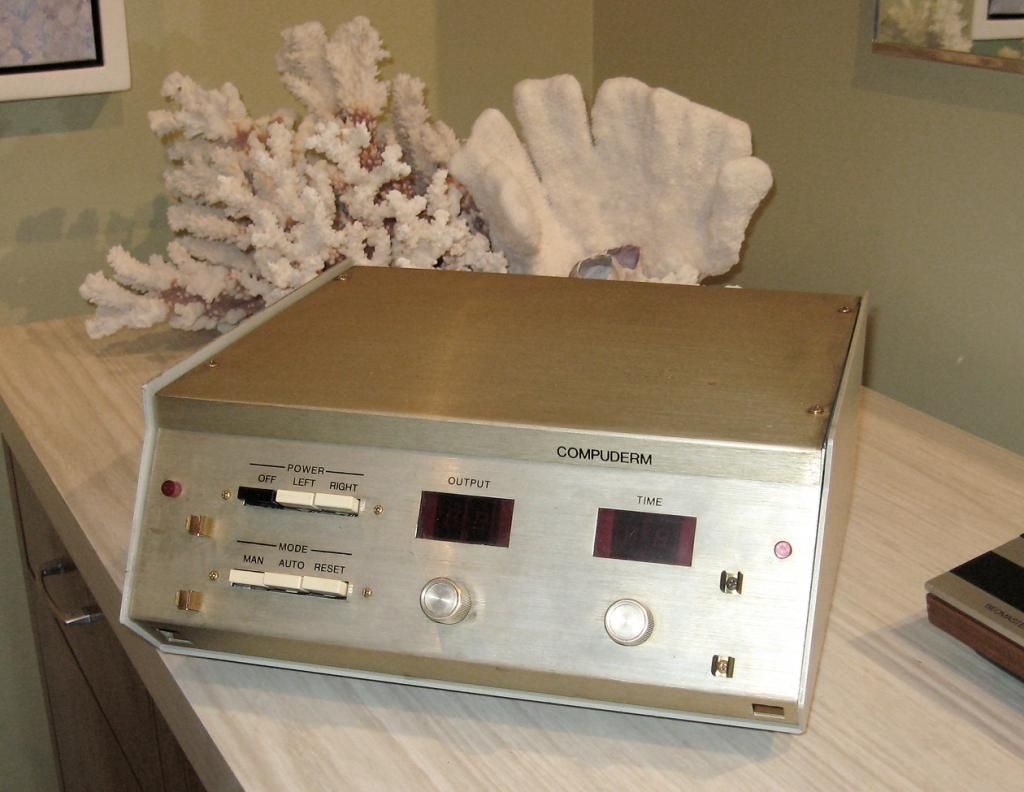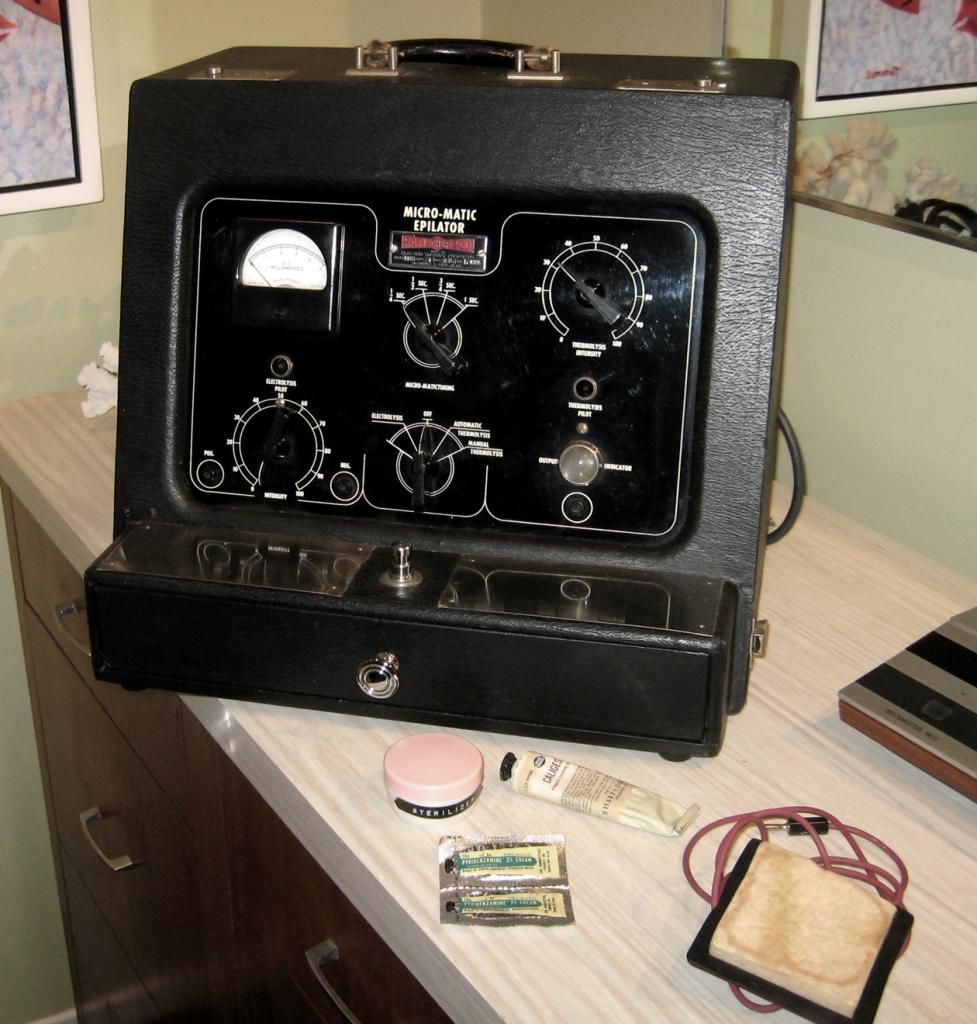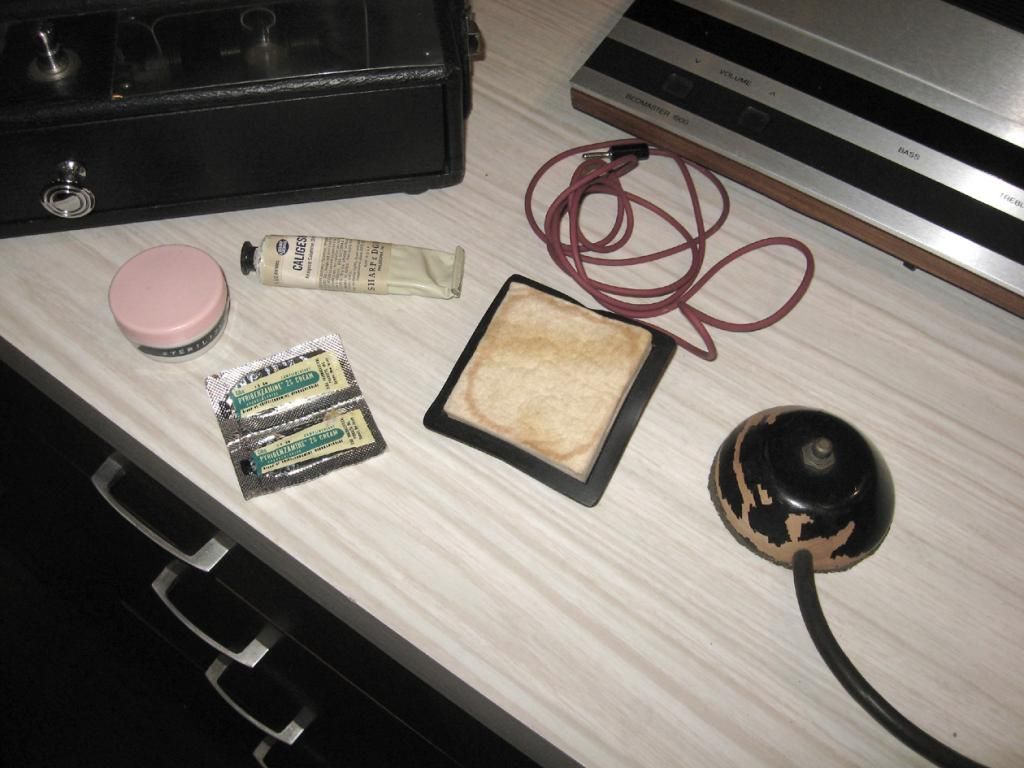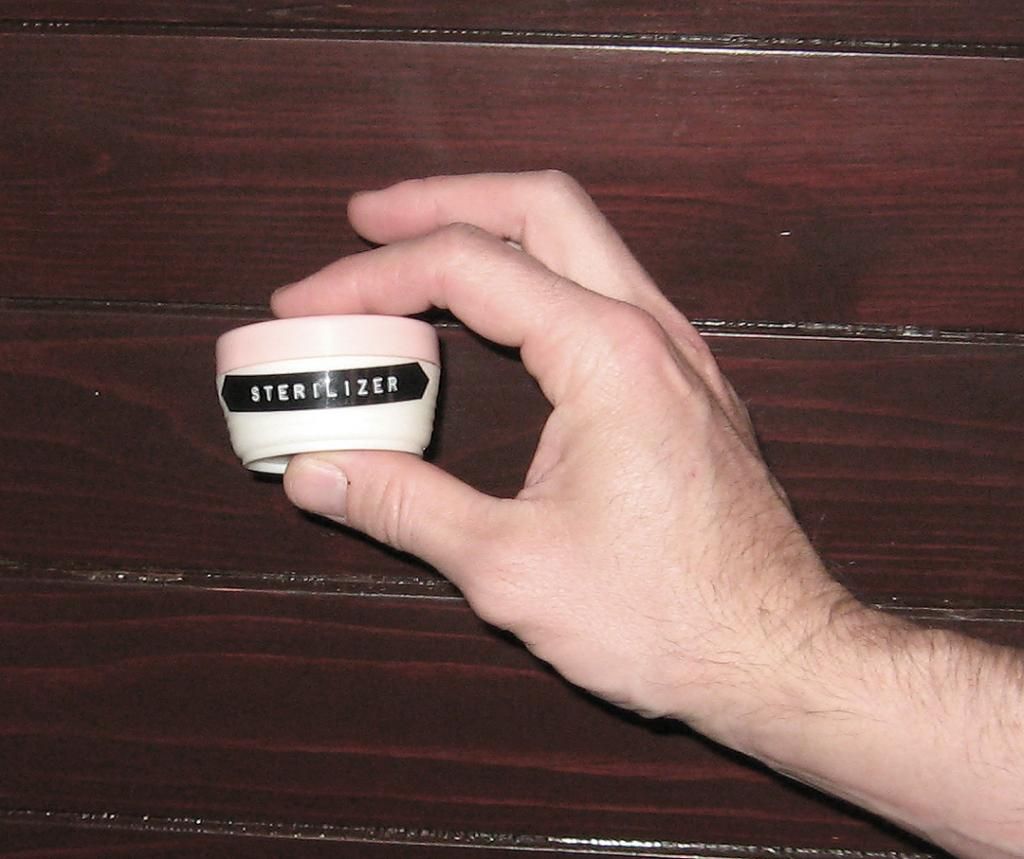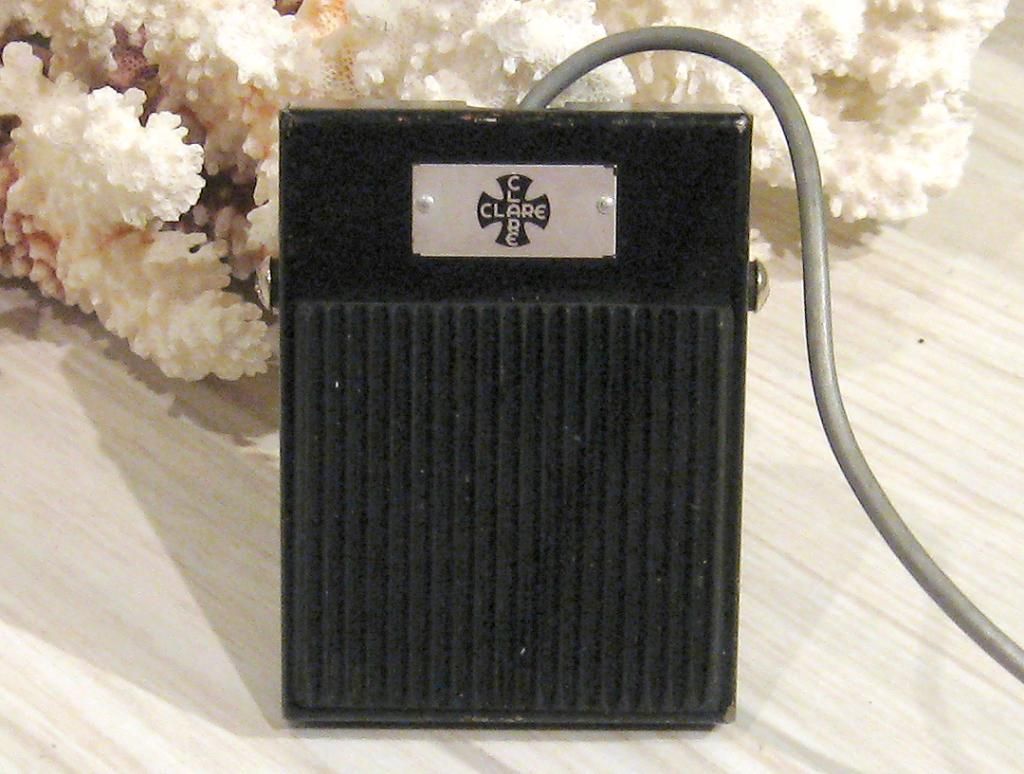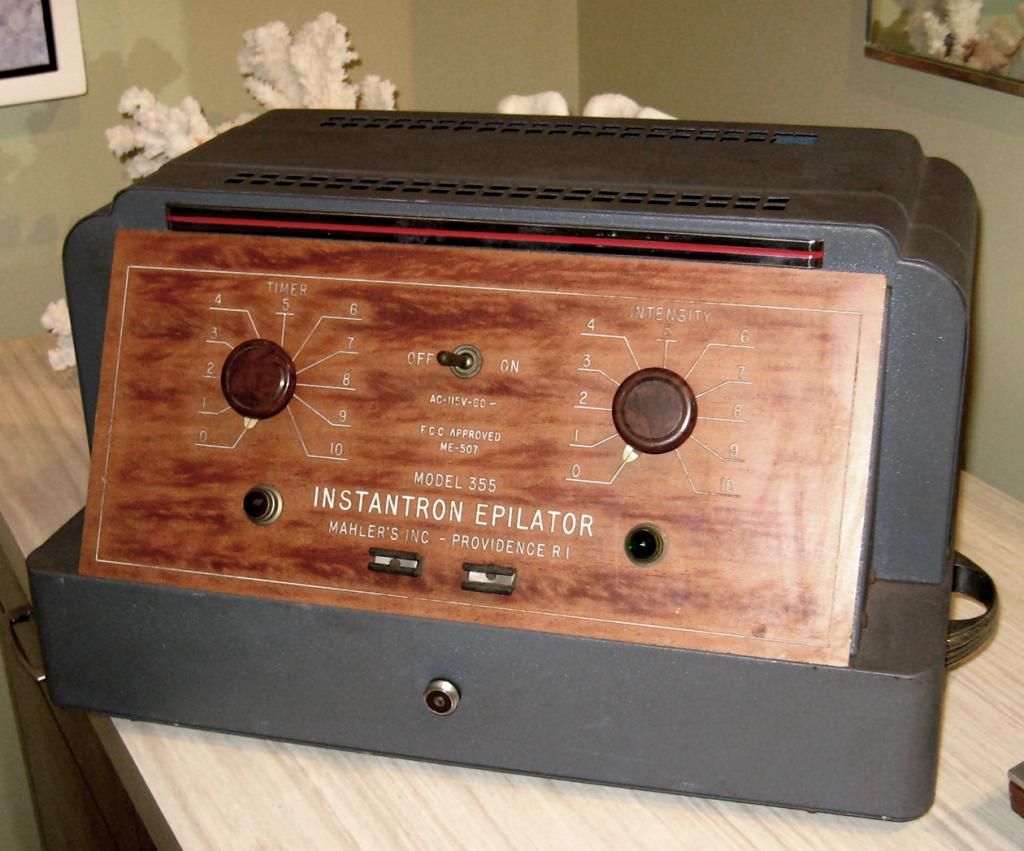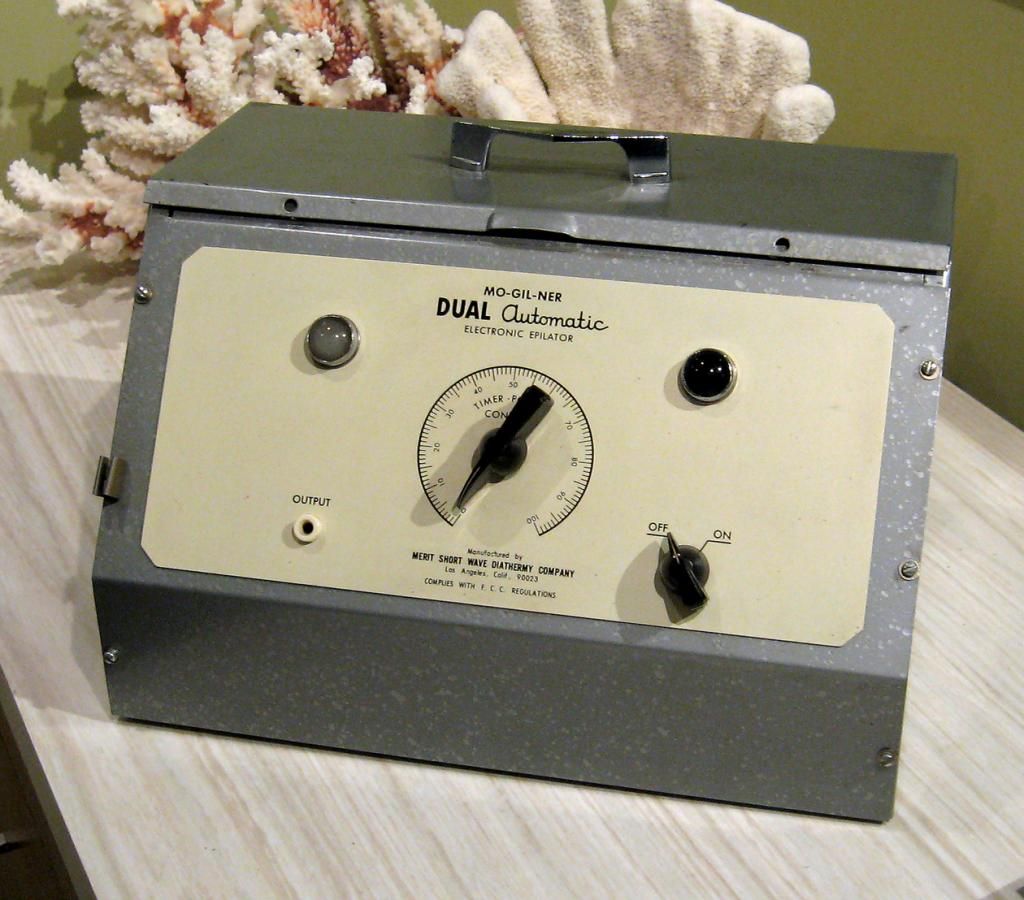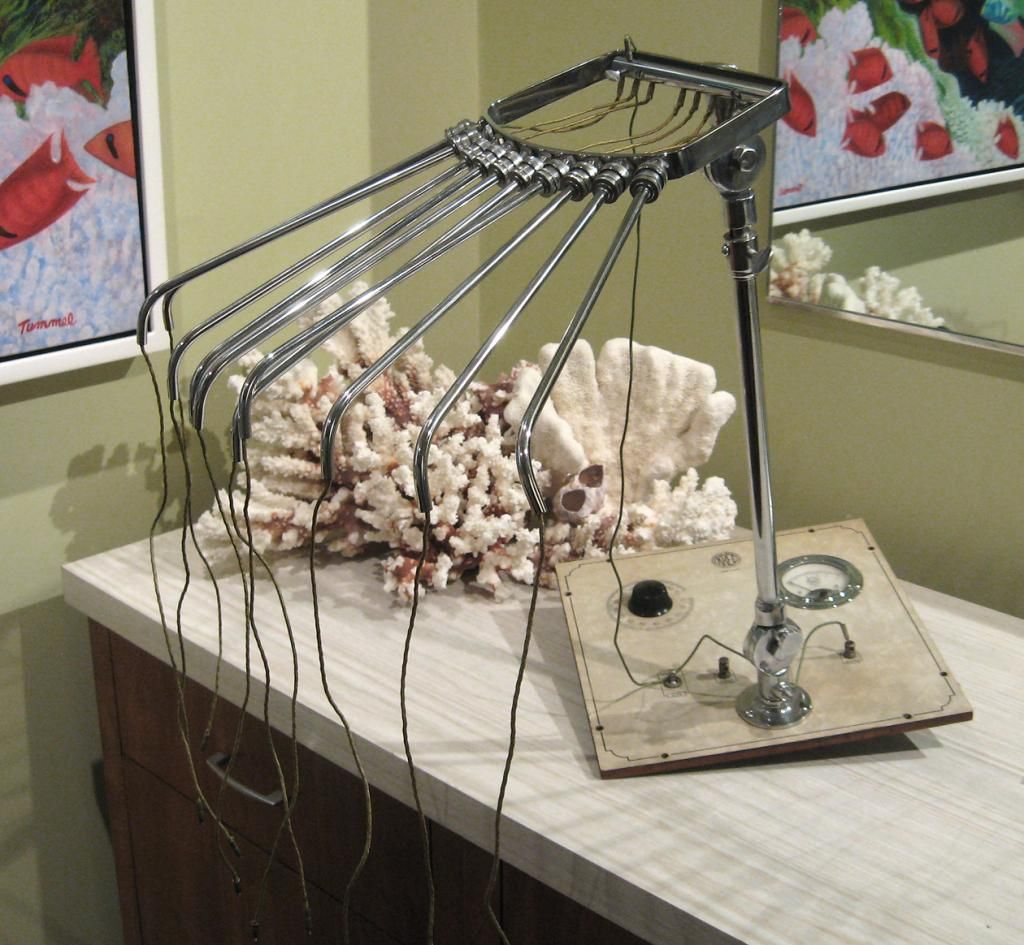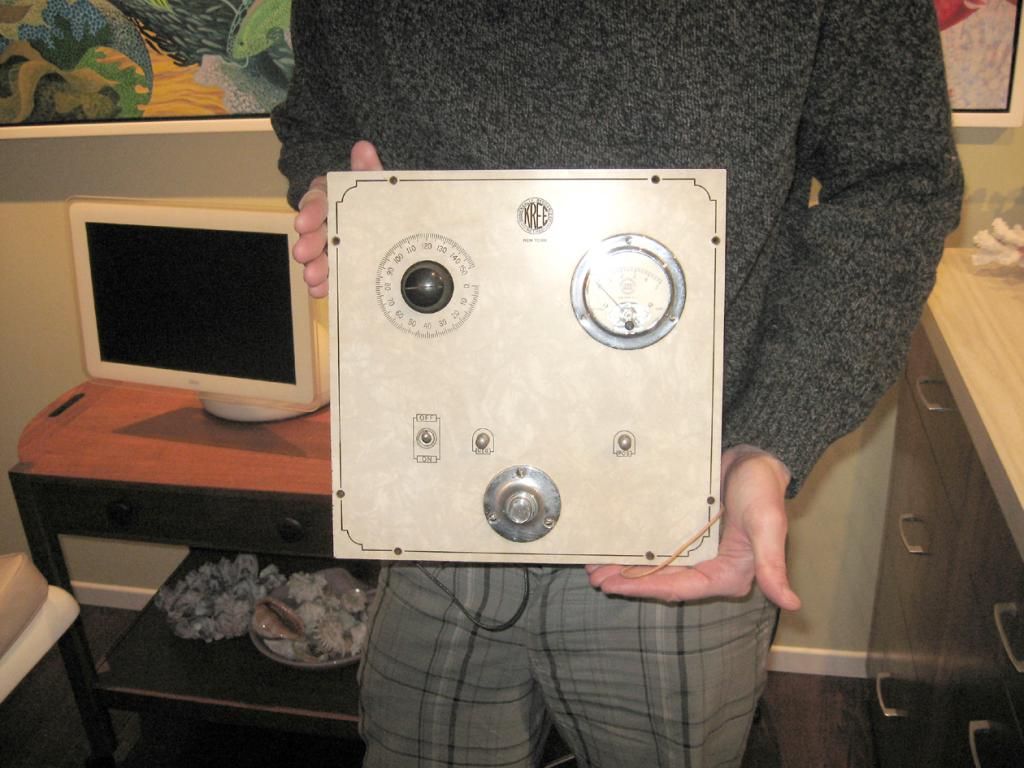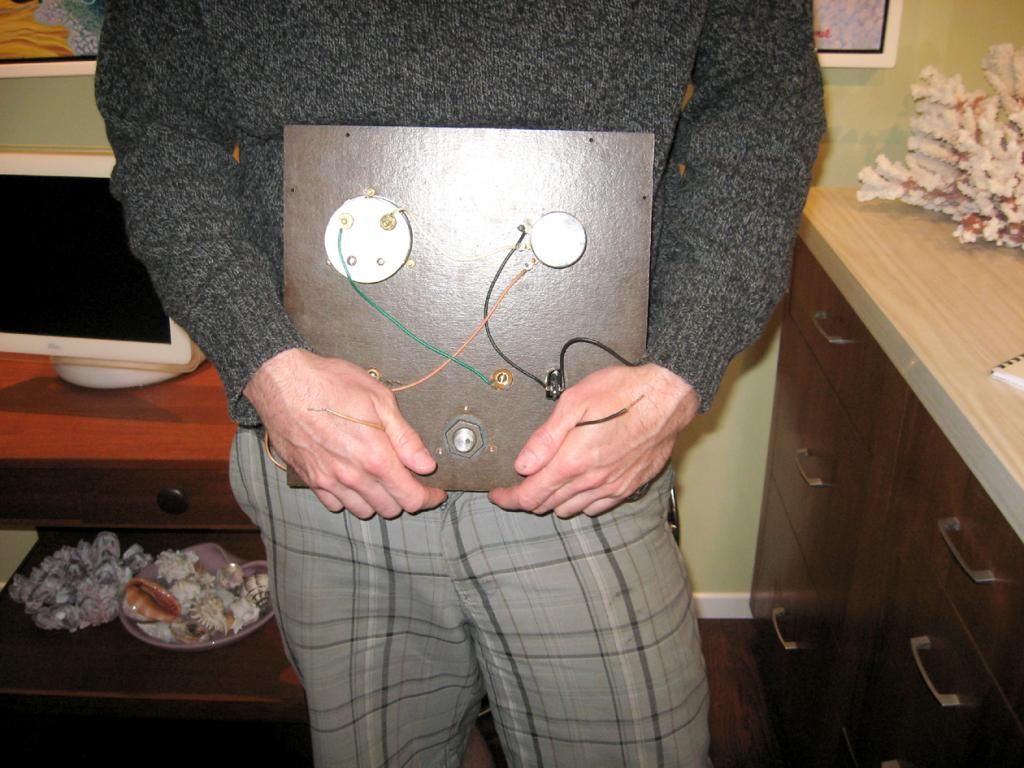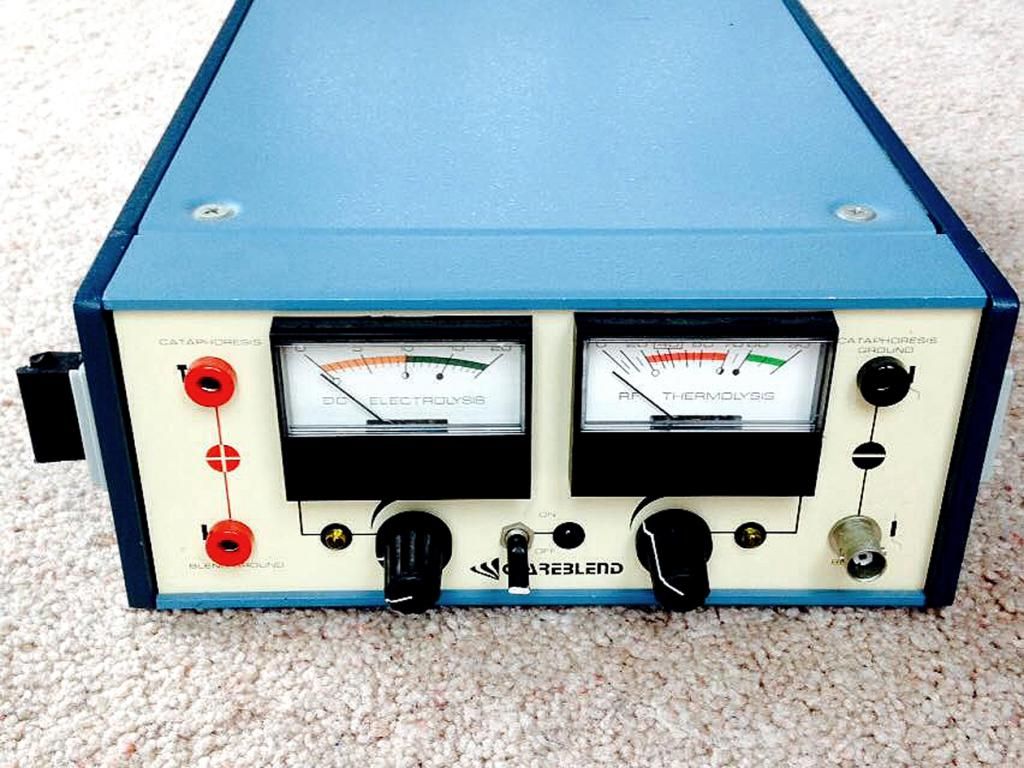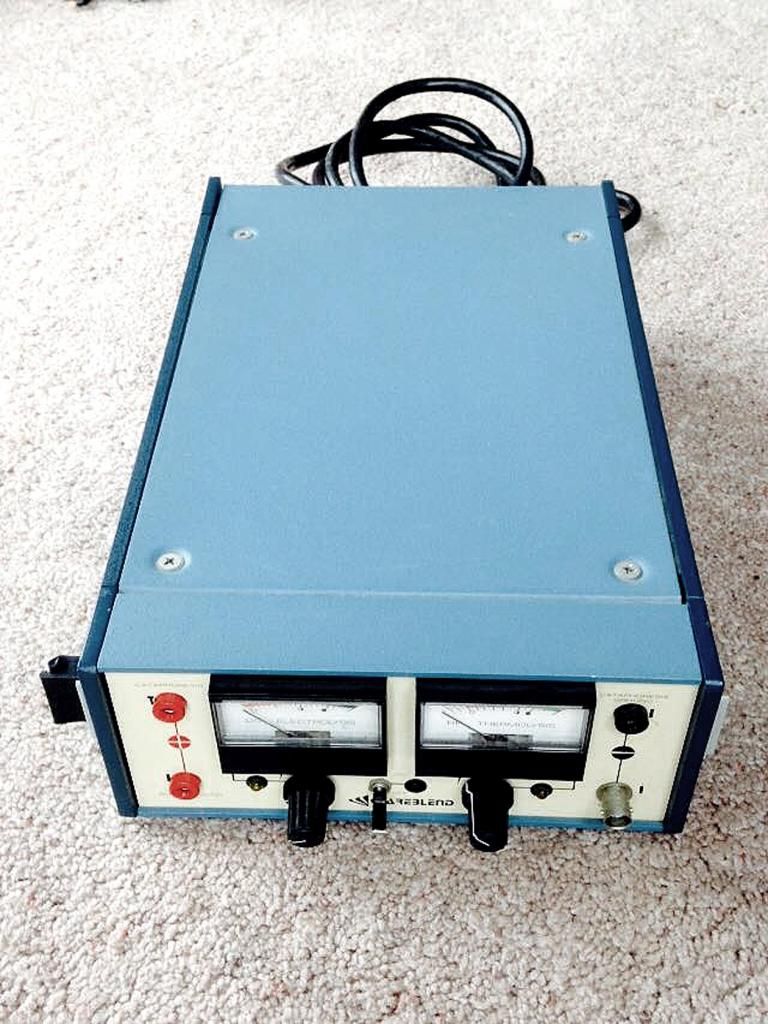Here’s a photo of my first blend machine, the Hinkel Model D. I hated the way it looked but ergonomically I still prefer several aspects of the design. This basic cabinet was used from the 1940s until the early 1980s! (I dressed-up my original unit with teak and leather padding … gave that one away too, but I’m hoping to get a photo).
The Model D had a separate “air desensitizer” that actually worked. The “fan-pump” looked like a tiny jet engine and was so powerful, if you didn’t have the needle secured in the needle-holder, the needle would fly-out and impale itself in the wall! The newer ones (e.g., the Clareblend) used air pumps from an aquarium supply … and were worthless.
The second photo is the first design-change in all those years and “yours truly” had a big part in it. First, Hinkel being a ridiculously modest guy, never put his name on his machines. I convinced him to do it, so this became the “AR Hinkel Electro-blend.”
Since I had a lot of experience making fiberglass kayaks (called Bonobot; "I’m not so modest), we decided to do the thing in fiberglass. What you see here (second photo) is the result. Actually, it’s a compromise: I wanted a much more “space-age” look. Remember the “Space Age?” The UC-1 also had a “computer function” … I didn’t like it. but, you know … it was the “Computer Age?”
I think we are moving into the “Robot Age,” so I’m wondering who will be the first to have the “Robotic Epilator?”
I drew the face panel, and my long-time surfer friend Merv Larson ended up making the tool and mold … and made all the “UC-1” cabinets. Merv had been on the US Olympic team (flat-water kayaking, K-1 and K-2 and got a “silver”). and was a champion surfer (he invented the surf ski).
I found Merv in an old video … and yes, he lived in a van at the time (lots of surfers did). I’m pretty sure that’s me in the video’s first few frames, in FEAR as usual … I mostly did beautiful 'WIPE-OUTS!" The place in the video is “Rincon” Santa Barbara. I was so near-sighted I could never see a wave until it was too late … then “splat.” (Hairs I COULD see!)
http://www.surfermag.com/blogs/eos/merv-larsons-strange-trip/
Anyway, this little unit became known as the “bread box,” because it looks like one! I wanted the unit to have a unique look … it did. However, I think I “missed the mark” on this design … later ones were much nicer. (Again, this is a new unit that still works!)

